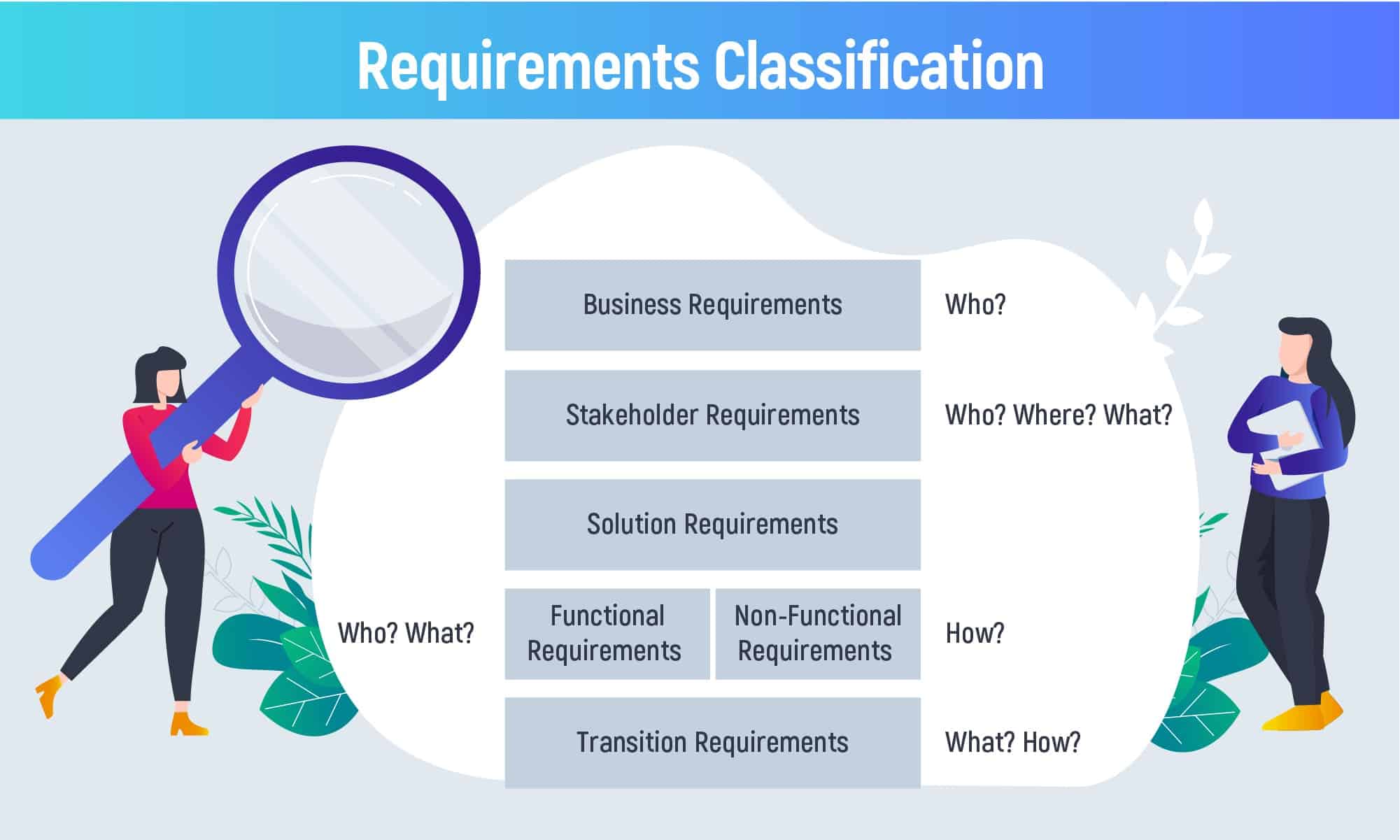Have you ever been in a conversation where you are discussing a brilliant idea, all the details are clear and there is only a need to create software. So, you have a business idea that is easy to implement, the vendor you are going to outsource your project to. But here is the main question, how long will it take? Can you have it ready for next week? Next month? Year? This question is always a tough one to answer. So, how to estimate hours for a software project in the right way?
Estimation is a complex matter and can’t be precisely defined. Usually, there are lots of changeable factors that impact the result. Incorrect estimation leads to lost revenue, an enlarged budget, missed business opportunities, and so on. We are here to discover how to estimate software development time!
- The Importance of Software Development Time Estimation
- Guidance on How to Estimate Time for Software Development
- Requirements gathering
- List the details
- Requirements elicitation
- Technical vision
- Software Project Time Estimation Challenges
- Software Development Time Estimation Methods
- Method of analogy
- Poker estimate method
- Work breakdown method
- Tips from Inoxoft Expert
- Project roadmap
- Break the whole project into smaller milestones
- Project size and type
- Don’t forget to leave a buffer time
- Analyze the requirements once again
- Get different perspectives on the idea
- Adopt different techniques
- Consider Inoxoft as Your Trusted Partner
- Final Thoughts
The Importance of Software Development Time Estimation
First of all, let us share what we mean by software development life cycle time estimation. It’s the process of determining the amount of time required for a software engineer to complete a specific task. Likewise, the estimation has to be applied to each subtask. If you don’t want to lose time and additional money during the implementation phase, accurately calculated time of the project is the key. According to research conducted by Project Management Institute, 25% of projects fail due to inaccurate time estimation.
In fact, underestimation of time can cause money loss. While the overestimation of the time and effort can lead to the fact that you will not get the project. Here are a few reasons why it is important to estimate programming time:
- It provides a guideline. It’s impossible to recognize a problem without first establishing all the expectations
- It helps manage uncertainty. It’s more convenient to know what can get done next week than it is to know what will get done next quarter
- It helps a team to be on the same page
- It helps adjust the roadmap
Estimating time for IT projects is beneficial to clients. Let’s see why:
- They can visualize the whole scope of work and plan the launch date
- There is transparency in the whole development process that positively impacts your business relationship
The main benefit for software development companies is that they know where to spend their time, what to prioritize and how much. Here are a few software development time estimation methods we use.
Guidance on How to Estimate Time for Software Development
The project timeline depends on the following factors:
- The team’s experience, seniority, and velocity
- The project’s complexity
- Risk factors
Usually, this process takes a couple of steps and we are here to share with you our software development time estimation template.
Requirements gathering
Try to understand the essence of the client’s idea. Discuss the details like
- Technical documentation
- High-level requirements
- Wireframes/Mockups
- List of competitors/Analogous websites
- Personal preferences
Ask as many questions as you can: clarify the vision, discuss functional and non-functional requirements. All of these help with the most accurate estimate.
Looking for outsourcing partners? Check out our tips on how to hire software developers!
List the details
Another useful software development time estimation example is to list all the details and activities you can remember regarding the future project and put them in the order in which they need to happen. Set a technical plan, the scope of work, work out of scope. Then perform business analysis, and prepare to change your list with effort estimation. Also, don’t forget about non-technical tasks like:
- meetings
- holidays/ sick leaves
- administrative work
Requirements elicitation
At the next stage, we process information that is available and set up final data requests if needed. If the requirements are complete we move forward to the next phase. But in case the obtained information is raw and lacks project specifics, we recommend initiating a product discovery service.
During this process, our business analysts perform an evaluation of the business, functional and non-functional requirements, and advise on the functionality. Search users’ pain points and get the best solutions to satisfy their needs. It is a cost-saving, risk-free input into your project development.
Technical vision
Software project time estimation also depends on the best tech stack for wanted functionality. Define your objectives to understand what you are going to deal with. For example, whether your project will be a web platform, a mobile application, or a cross-platform solution. Then, do research, discover what are the technologies used by your competitors in similar cases. Find out the reason they use this and what results they get in the end.
Example of how technology stack may look like:
API Application
- Web framework: Django,/.NET Core…
- Programming language: –Java/Python…
Front-end Application
- React/ Flutter….
Data Storage
- AWS S3…
Software Project Time Estimation Challenges
There may be lots of twists and turns that make the estimating process complicated. Usually, it’s difficult to answer how to better estimate software development time, as it changes every time the initial requirements are changing or other unexpected dilemmas appear. Nevertheless, what other challenges can impact software development estimates?
- Engineers availability
- Different approaches to building software
- The productivity and experience level of the team
- Leaving quality assurance to the last day
- Unforeseen defects
- Issues with system/environment, software/library, design/architecture, etc.
- Non-engineering related questions
Software Development Time Estimation Methods
There are common software development time estimation techniques. Let’s take a closer look at them:
Method of analogy
This method is mostly used when you have limited information about the project and based on the experience of work on previous projects. By using this method the time and cost of developing similar projects are compared to a current one.
Poker estimate method
So, how to estimate a software project in man-hours? We say try the approach brought by Agile project management. It works in a way that a team of engineers and business analysts based on the client’s request, do estimation separately. Then each team member declares how much time she or he needs to spend on a specific task. Questionable estimations are discussed together.
Work breakdown method
According to this approach, you divide the whole project into smaller manageable deliverables. This gives the opportunity to predict how much time a small task would take rather than calculate a project. Also, with this method, the client can see constant progress.
Tips from Inoxoft Expert
Before estimating time for software development, consider the following:
Project roadmap
So, let start with the basic time estimation techniques in software development that is a creation of the project strategic plan: objectives, milestones, deliverables, resources, and timeframes.
Break the whole project into smaller milestones
Another useful step of estimating a timeline for a project is to break down the project into elements. This process brings clarity to what specific features need to be developed.
Project size and type
You can’t estimate the project based completely on your previous experience of working on similar cases. The size, type, and scope of each project impact the estimation. The bigger the project is the more integration it requires. The type of project matters as well, because developing mobile applications may need more time to complete than web platforms. All of this leads to the increased estimated time required to finish the project.
Don’t forget to leave a buffer time
Analyze your previous experience: how much of it is done, the estimated time for that project, and the actual amount of time it took to finish the project. Experts advise keeping a 15-20% time buffer to deal with any unexpected situations without lots of stress.
Analyze the requirements once again
To create the functional breakdown of your solution in the most efficient way you need to know the difference:
- Functional requirements base on the final perception of the future product. It is possible to visualize the final result by showing key business processes, sequence diagrams, and functional decomposition.
- Non-functional requirements define the system’s quality characteristics attributes (installability, performance, interoperability, usability, scalability, security, etc.)
Get different perspectives on the idea
Each perspective looks at the idea differently and this can provide a lot of interesting insights on the things that need to be done. Naturally, the more viewpoints on the project you have, the easier it will be to choose the best approach.
Adopt different techniques
Our team uses a business analysis as one of software development time estimation tools for product discovery. Some of them are:
- Prototyping for system capabilities functional decomposition
- Interface analysis
- Feasibility Analysis (whether the solution is practical)
- SWOT Analysis
- Scope Modeling and Root Cause Analysis
- RACI Matrix, Roles & Permissions Matrix, Personas for Roles evaluation
- User Stories (how the functionality works to satisfy the user)
Consider Inoxoft as Your Trusted Partner
Here at Inoxoft, we provide clients with estimation during the initial stage of our cooperation. Let’s walk you through our software development time estimation best practices.
During our first meeting, we introduce our company: our principles on delivery, expertise, and relevant experience. Then we ask our clients lots of relatable questions, e.g. a business need, and the idea they want to implement.
After receiving all the necessary information regarding an idea (high-level requirements, personal preferences, list of competitors) and requirements elicitation, we can provide an approximate quotation. This document may include the scope of work, work out of scope, team composition, and of course project cost and timeline.
In case you have a unique concept you’d want to test, our team offers services of developing a Minimum Viable Product. It’s the process that will impact the timeline of the project but at the same time, it will strengthen it a lot. MVP is a simple version of a product that has just enough features to stay viable and meet core functionality. MVP development is sometimes considered as a safe boat, especially for startups. As per statistics, 20% of new businesses fail after one year of competing on the market, and about 50% of startups fail after four years. So choose MVP when you need to:
- check if users are eager to use it or buy it initially
- show potential benefits to early users
- develop a product with a set of features essential to cover users’ needs
- give an understanding of product usability and market demand
- avoid wastage of development efforts time and costs
- verify product viability and assumptions
Still in doubt? Here are our top 5 reasons and steps to build an MVP!
Final Thoughts
This was our time estimation for the software development template that varies depending on the project and its requirements. These approaches will be especially helpful for Agile teams. If you are interested in custom mobile applications development, web, or UI/UX design and development service, don’t hesitate to contact us, Get expert advice, and choose the best approach for your business needs!
Frequently Asked Questions
What is software project time estimation?
It stands for the process of estimation of the time required for the software development of a particular project.
How to estimate a software project?
To calculate the time for a full software development lifecycle, we identify business goals, gather requirements, evaluate them, determine priorities, analyze the market, use specific methodologies to provide our clients with the most accurate estimate.











